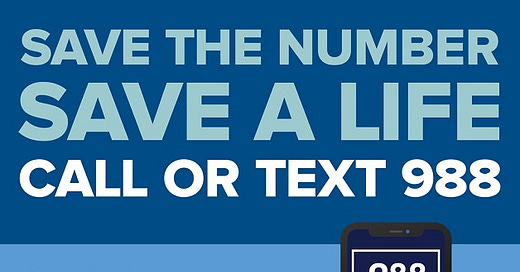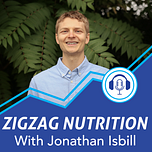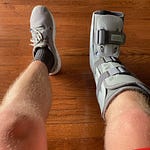September is National Childhood Obesity Awareness Month and provides a chance to learn more about this serious condition. Obesity puts children at a higher risk for developing a variety of chronic health conditions and diseases.
According to the CDC, here are some stats on childhood obesity measured from 2017-2020. Many would now suggest that due to the pandemic, increase in ultraprocessed food consumption, sedentary lifestyles, and increased screeentime and stress levels for children that the rates for childhood obesity today would be greater than the statistics below.
The prevalence of obesity was 19.7% and affected about 14.7 million children and adolescents.
Obesity prevalence was 12.7% among 2- to 5-year-olds, 20.7% among 6- to 11-year-olds, and 22.2% among 12- to 19-year-olds. Childhood obesity is also more common among certain populations.
Obesity prevalence was 26.2% among Hispanic children, 24.8% among non-Hispanic Black children, 16.6% among non-Hispanic White children, and 9.0% among non-Hispanic Asian children.
Obesity-related conditions include high blood pressure, high cholesterol, type 2 diabetes, breathing problems such as asthma and sleep apnea, and joint problems.
Article - for additional reading: 50 Ways to Reduce Childhood Obesity in Indiana.
Past Stories I’ve Published on the the topic:
3 Startling Statistics on Children’s Health Today
1 in 5 kids today are obese — many more are overweight or obese.
1 in 3 kids today are expected to experience some form of diabetes in their lifetime.
Children's Mental Health: Another look 👀 Because They Deserve It
About 16.5% of school-aged children had been diagnosed with a mental health disorder in the United States in 2016. CDC report (1 in 6 kids)
3.5 million American children are now taking Ritalin and similar medications for ADHD, up from only 150,000 or so in the late 1970s. That comes to about one out of every 23 children from four to 17 years old.
September is Suicide Awareness and Prevention Month
How to Help Someone You Know
If you know someone who is at immediate risk of suicide, call 911 right away. It can be difficult when someone you know expresses thoughts about suicide, but you can show support by doing the following:
Talk. Your willingness to express your concern for the person in crisis can be the first step in getting that person help.
Listen. Being an active listener is another way of reminding a person in crisis that they are not alone.
Remain Present. Your physical and emotional presence in the person’s life makes a difference. If you are worried about their safety, get help from a mental health professional immediately.
Call or text 988. Last year, 988 was activated as a new three-digit dialing code. When someone dials 988, they will be connected to the existing National Suicide Prevention Lifeline. This confidential support line is available 24 hours a day to provide free help to people in suicidal crisis or mental health-related distress.
World Suicide Prevention Day is September 10. It’s a time to remember those affected by suicide, to raise awareness, and to focus efforts on directing treatment to those who need it most.
Suicide is complicated and tragic, but it is often preventable.
Knowing the warning signs for suicide and how to get help can help save lives. Learn about behaviors that may be a sign that someone is thinking about suicide. Learn by visiting nimh.nih.gov/suicideprevention.
What Are The Warning Signs of Suicide?
Warning signs that someone may be at immediate risk for attempting suicide include:
Talking about wanting to die or wanting to kill themselves
Talking about feeling empty or hopeless or having no reason to live
Talking about feeling trapped or feeling that there are no solutions
Feeling unbearable emotional or physical pain
Talking about being a burden to others
Withdrawing from family and friends
Giving away important possessions
Saying goodbye to friends and family
Putting affairs in order, such as making a will
Taking great risks that could lead to death, such as driving extremely fast
Talking or thinking about death often
Other serious warning signs that someone may be at risk for attempting suicide include:
Displaying extreme mood swings, suddenly changing from very sad to very calm or happy
Making a plan or looking for ways to kill themselves, such as searching for lethal methods online, stockpiling pills, or buying a gun
Talking about feeling great guilt or shame
Using alcohol or drugs more often
Acting anxious or agitated
Changing eating or sleeping habits
Showing rage or talking about seeking revenge
Additional Research and Reading
on the topic of Medication induced / related Suicidal ideation, something we certainly don’t talk about enough.
Risk of Suicidal Behaviors and Antidepressant Exposure Among Children and Adolescents: A Meta-Analysis of Observational Studies
Patients who take SSRIs may experience side effects such as violent behavior, mania or aggression, which can all lead to suicide.
Depression is a complex issue caused by biological, genetic, environmental and psychological factors. SSRIs are generally thought to treat depression by blocking the re-uptake of serotonin in the brain. This leads to higher levels of serotonin in the brain, a neurotransmitter thought to positively influence mood, sleep and emotion.
But this can result in mood swings and may lead to worsening depression or anxiety. Taking more than the recommended dose or suddenly stopping use of antidepressants can increase a patient’s chance of experiencing suicidal thoughts and behaviors.
What begins as withdrawing from friends and activities and a loss of interest in work can escalate to harming oneself. In clinical trials and public use, there have been cases where antidepressant users have thought about, attempted or actually committed suicide.
Suicide and Antidepressants: What Current Evidence Indicates
And I’ll share this tweet from one of the many physicians I follow online. I care about this topic deeply and have followed medical doctors, psychologists, and psychiatrists from around the world that explore this topic with an open mind. I’ve learned a lot over the years and continue to learn more.

Men’s Mental Health:
Nearly 80% of suicides are men.
US male suicide rate is 3-4x that of females, accounting for 79% of suicides - around 105 daily.
Each day, nearly 12 men in the UK die by suicide.
Suicide is a leading cause of death for men under age 50.
In the United States, suicide is the 2nd most common cause of death for men under the age of 45.
In Canada, suicide is the 2nd most common cause of death for men under the age of 50.
In the UK, suicide is the largest cause of death for men under the age of 50.
I will writing about this more in coming weeks, but common “talk therapy” does not sufficiently serve men struggling with mental health issues or thoughts of suicide. Men deal with different problems than women, and deal with problems differently than women. Common talk therapy is much more of a feminine approach to therapy.
Listen to the whole episode this week to learn more about these differences and hear some of my thoughts and experience with this concern.
Ps. share this message with two people who could learn something from this story. Thank you!

















Share this post